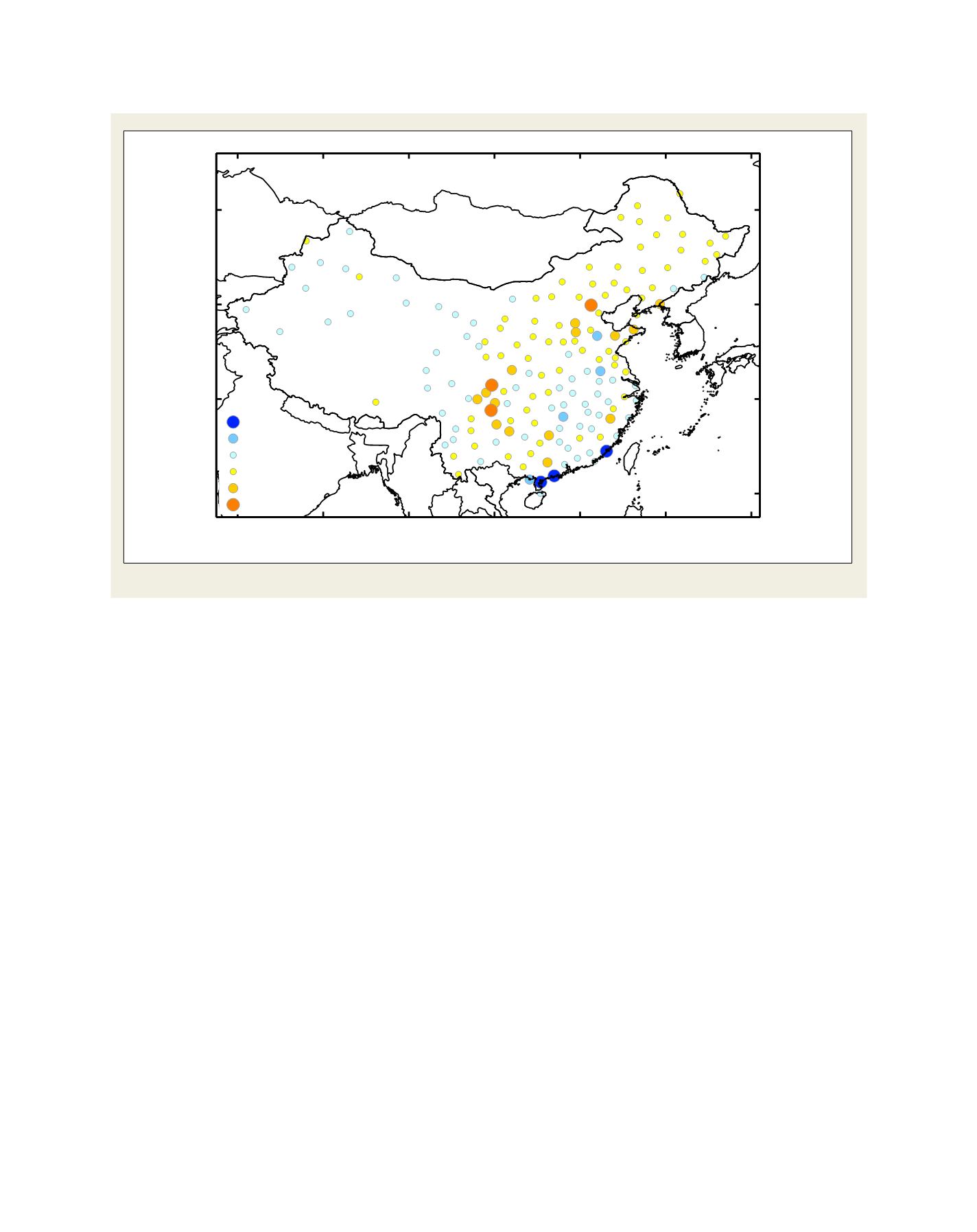

[
] 262
C
apacity
D
evelopment
and the North China Plain. This so-called south-
ern flood and northern drought pattern in eastern
China has been widely believed to be closely asso-
ciated with the changes of the East Asian summer
monsoon. To cope with this inter-decadal change,
the country has been implementing a huge project to
divert water from southern China to northern China
through a man-made canal. In this way, fresh water
resource will be added for the sustainable develop-
ment of the economy in northern East China. All
the above insights have also provided a scientific
base for making national policies on climate change
adaptation and mitigation.
Climate prediction-related services
At present, most of the population lives in East China,
particularly in and around the middle and lower
reaches of the Yangtze River and Yellow River valleys.
Agricultural and industrial production in those areas
plays an essential role in the domestic economy. In
recent decades, anomalous climate events, particularly
for severe floods and droughts in summertime, have
occurred frequently in East China and have impacted
many aspects of environment, economy, society and
people’s daily life. For example, a severe summer-
time flood event occurred in the middle and lower
reaches of the Yangtze River Valley in 1998 and lost
over 2,000 human lives, which led to a direct loss of
significant warming during the twentieth century and the begin-
ning of the twenty-first century. The country-averaged annual
mean surface air temperature has increased by 0.5–0.8 K during
the period 1905-2001 and by 1.1 K during 1951-2001. Both of
these figures are slightly higher than the global temperature
increase for the same periods.
1
The warming is not uniform
over time and space. There are generally two warming episodes:
the 1920s-1940s and the 1980s to the present. The Qinghai-
Tibetan Plateau and northern parts of China have experienced
larger increases in temperature than the rest of the country. By
contrast, a cooling trend occurs in southwestern China. Seasonal
mean temperature for all seasons has shown an upward trend
between 1951 and 2001, while the strongest warming appears in
winter and the weakest in summer. Because of a warming shift
of the whole seasonal cycle, the 24 solar terms have changed
through recent decades. Meanwhile, the number of frost days
has displayed a significant downward trend, suggesting that the
frost-free seasons in China have been lengthened. These results
have provided a scientific base for climate change adaptation,
especially for agricultural planning and energy-saving manage-
ment throughout the year.
Observations show that no significant long-term trend in
nationwide precipitation occurs for the period 1905-2001. At
the regional scale, however, decadal variability and obvious
trends are detectable during 1956-2002. In particular, annual
precipitation has increased obviously in northwestern China
and the middle and lower reaches of the Yangtze River Valley,
while the opposite situation is true for the Yellow River Basin
75E 85E 95E 105E 115E 125E 135E
20N
30N
40N
50N
> 4
> 2
> 0
< 0
< −2
< −4
Spatial distribution of linear trends of annual mean precipitation with 160 stations in China from 1951-2010. Units: mm/yr
Source: IAP China
















